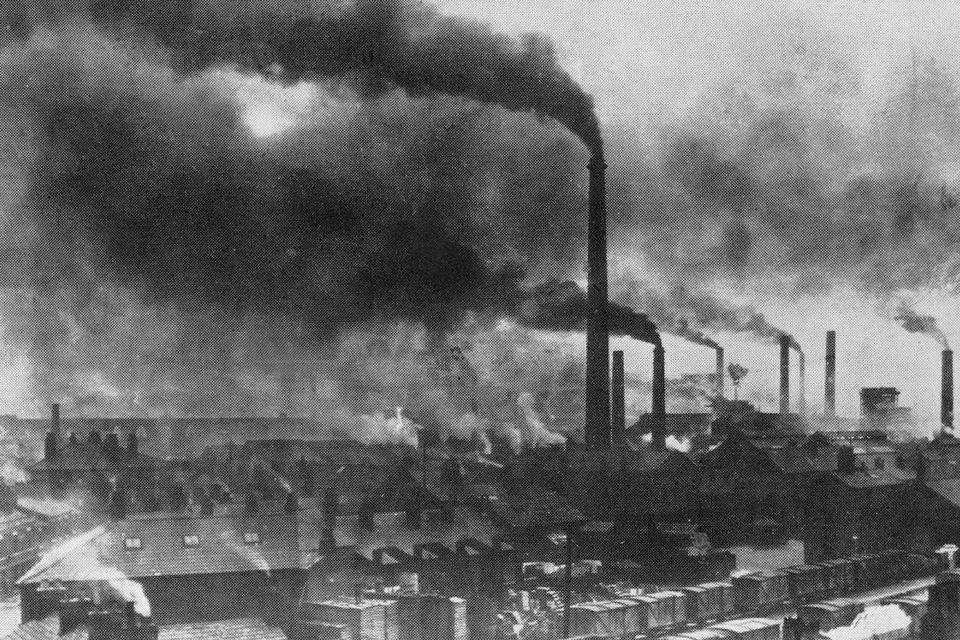The Industrial Revolution

The Industrial Age or the Industrial Revolution is more popularly known as the Steam Age, due to its widespread usage of steam power. This was the era that set the stage for the world to become what it is today. Its innovations and inventions are some of the most important in human history.
The demand for coal in England steadily increased from 1709, and by 1712 that demand was struggling to be met. Necessity is the mother of invention, and the “common engine” or atmosphere engine was invented by Thomas Newcomen and later improved by James Watt to create the steam engine.
The steam engine was one of the most important inventions of the Industrial Revolution. Indeed, it was when the steam engine was invented, when science truly became what it is today, was when it is believed that the Industrial Revolution began, around the year 1700. Science was no longer just the interest of a few, but a profession pursued by many.
The world underwent many alterations during this time. For instance, many types of labour-intensive work began to be done by machines and factories. There was additionally exponential population growth and an increase in the average income.
The Industrial Revolution began in Great Britain and many of its inventions and breakthroughs originated from there. At that time, Britain was one of the world’s leading nations. It is generally believed that Britain’s trading and the rise in business contributed to the beginning of the Industrial Revolution. Nonetheless, the exact causes remain under debate and theories vary and are very complex.
The Industrial Revolution was one of human history’s greatest milestones, as it significantly improved everyone’s lives in every aspect. As previously mentioned, populations and average incomes had gone up, alongside the general quality of life, although it is argued that this may not have happened until much later. Likewise, food and nutrition, housing, sanitation, water supply, and literacy rates were improved.
The Industrial Revolution beyond Great Britain came further along. Oftentimes, the technology was bought from Britain, or a British citizen travelled abroad to look for new opportunities to expand their businesses. The Industrial Revolution was believed to have ended around 1890.
Taking a moment to evaluate the world of today, assessing the inventions of today, one may conclude that most of these inventions, or at least the bases or innovations that allowed these inventions to come about, came into existence during the Industrial Revolution.
The steam engine already having been mentioned, another example would be the light bulb. Most people have several in their homes, their devices, their vehicles, and elsewhere. Another example would be the radio, invented with the discovery of radio waves. There is also the telephone, the base of today’s mobile phones, and the internal combustion engine, which was derived from the steam engine.
Above all, however, would be electricity. Most of the previously mentioned inventions would not function without them. Taking into consideration how the world wide web itself hinges on electricity, the world of today is greatly influenced by it as well. As most people would have to acknowledge, electricity has been deeply integrated into our lives.
To conclude, the Industrial Revolution was a notable event in human history. If it had not happened, or if it had happened differently than it had, the world today as it is would most certainly be vastly different. Many inventions of the Industrial Revolution, as well as the historic time period itself, were due to the reason that humans are naturally curious and are always striving to be more. This shows the amazing results of always aiming to improve and always being the best possible form of oneself that one can be. In the words of Edward Jenner, the English physician and scientist who pioneered the concept of vaccines in the Industrial Revolution: “It is a privilege to make a real difference in your own lifetime.”

References
Industrial Revolution - Wikipedia
Science - DK Publish, 2009
Significant Inventors of the Industrial Revolution - ThoughtCo.com
Author biography
Aishath Manaal Moosa is a 14 year old student who enjoys reading, improving her writing skills and trying her hand at art in her spare time. She aspires to become a medical doctor when she is older.

Cite this article as:
Aishath Manaal Moosa, The Industrial Revolution, theCircle Composition, Volume 1, (2021). https://thecirclecomposition.org/the-industrial-revolution/
